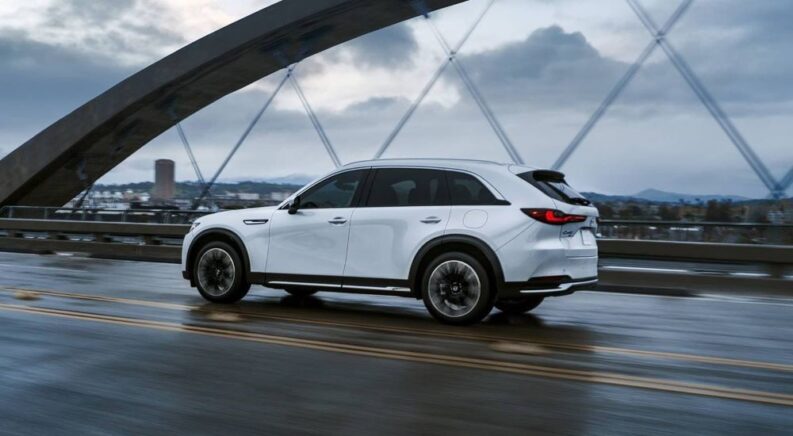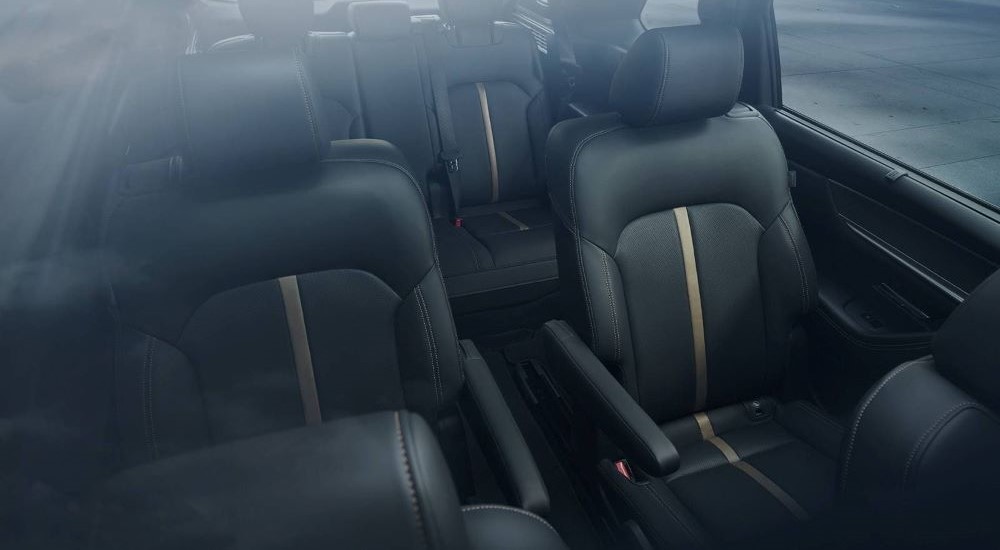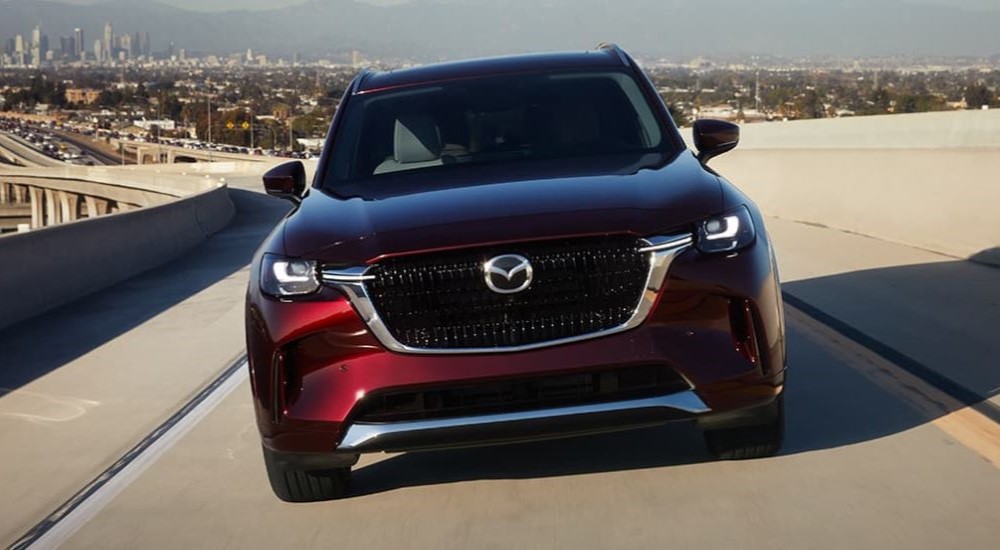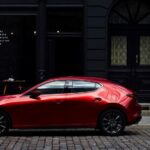“Revolutionary, “evolutionary,” and “groundbreaking” are a few of the words often thrown around to build up hype for a new foray into performance engineering in the automotive world. The final product doesn’t always live up to the hype when there are too many superlatives used leading up to the release. Suffice it to say, the results can sometimes leave a lot to be desired. Sometimes, however, the hype does follow through, and we see how different companies with different powertrain philosophies can come to productive fruition. We’ve seen Ford, Chevy, and Nissan all go down this route in recent times when it comes to alternative fuel options, and now Mazda has joined the ranks. The big question is, will Mazda’s new I-6 plug-in hybrid herald the new era of performance vehicles for their new line of crossovers?
Nissan’s VC-Turbo powerplants were supposed to be the silver bullet for compacts and crossovers, but they were not quite as powerful or as fuel efficient as some of their nearest competitors. It’s cool technology, no doubt, but like a lot of cool technologies, there are also some drawbacks. Are we looking at the same sort of outcome for Mazda’s new evolution on the e-Skyactiv platform for the larger crossover platforms like the CX-90? Is it enough to get people who weren’t interested in the three-row crossover to seek out a Mazda CX-90 dealer to get their hands on the latest iteration of the e-Skyactiv technology? Will the hybrid design inspire people to see it as a fuel-efficient alternative to the Chevy Traverse, Jeep Grand Cherokee, or the Volkswagen Atlas?
Mazda’s First Three-Row Crossover Powered by Their First High-Compression Hybrid Powertrain
High-compression output, two motors, and a plug-in option to recharge the electric motor sounds like some kind of motorized Frankenstein monster. However, Mazda has been toiling away at turning one of their more popular high-compression ratio platforms, the Skyactiv-G used in Mazda’s current line-up of vehicles, into a hybrid platform for larger vehicles, specifically the CX-90. The interesting thing about the CX-90 is that it can be configured in a few different ways, as a three-row six-, seven-, or eight-seater.
The variety of seating options is extensive since it’s a platform built on a 122.8-inch wheelbase. What this translates into is a hefty vehicle that clocks in at a minimum of over two tons, and thus needs some serious power under the hood to get moving. Mazda’s solution for dealing with all the heft comes in the form of the new e-Skyactiv power plants.
The three powertrains include the e-Skyactiv-G mild-hybrid, the e-Skyactiv-G Turbo S version, and the e-Skyactiv PHEV, which enables you to plug in and recharge the CX-90 to regain additional travel range. The hybrid form of the Skyactiv platform is designed to give the CX-90 a lot of low-end torque, stable top-end powerband, and plenty of fuel efficiency for a vehicle its size. If things work out, maybe we will see more iterations of the e-Skyactiv series of engines on a wider variety of Mazda vehicles.
What Does the e-Skyactiv Hybrid Platform Bring to the Table?
The three powertrain options for the multiple CX-90 trims are specified as a 3.3L turbocharged I-6 MHEV (mild hybrid electric vehicle) that provides 280 horsepower and 332 lb-ft of torque, paired with the Skyactiv-Drive eight-speed automatic transmission. The I-6 engine is also mated with what’s called an MR M-Hybrid electric motor, which is a 12 kW motor powered by a 0.33 kWh battery pack. The second iteration of the 3.3L turbocharged I-6 MHEV is labeled as the Turbo S. It’s a more powerful version of the base engine, offering up to 340 horsepower and 369 lb-ft of torque. It has the same eight-speed Skyactiv-Drive transmission and the same 12 kW electric motor. This additional power and torque will get the CS-90 from 0 to 60 mph in 5.8 seconds instead of 6.5 seconds on the base model.
The real barn burner of the SkyActiv offerings for the CX-90, and the potential future of other Mazda hybrids, is the 2.5L I-4 PHEV, also known as the e-Skyactiv PHEV. It’s not a turbo engine but instead combines the naturally aspirated four-cylinder with a permanent magnet synchronous electric motor that outputs 129 kW, powered by a meaty 17 kWh battery pack. The e-Skyactiv PHEV is capable of producing a total combined 323 horsepower and 369 lb-ft of torque. All iterations of the e-Skyactiv platform for the CX-90 are all-wheel drive, which could be an interesting application to future vehicles if Mazda decides to stick with it and iterate upon it, especially if they move this application over to their smaller vehicles.
When it comes to the fuel economy for the three-row SUV, the CX-90 fares quite well. The base 3.3L I-6 MHEV manages 24 MPG in the city and up to 28 MPG on the highway. The Turbo S version has the same highway mileage, but slightly less gas mileage in the city, topping out at 23 MPG. The 2.5L I-4 PHEV tops out at 56 MPGe in the city and up to 26 MPG on the highway, according to the EPA. You also get up to 26 miles of electric-only range.
How Does the e-Skyactiv Hybrid Platform Measure Up to Its Nearest Competitors?
You get some impressive range capabilities out of the e-Skyactiv PHEV, but the question is, how does this measure up to what’s on the market at the moment in the same segment? If you look at the Chevy Traverse, the CX-90 has better horsepower and torque than the 2024 model Traverse if you’re comparing the 3.3L MHEV Turbo S to the 2.5L turbocharged I-4 of the Traverse, the latter of which manages 328 horsepower and 326 lb-ft of torque. The Traverse does offer better horsepower than the base 3.3L on the CX-90, but otherwise, the CX-90 stomps by comparison.
Power-wise, the CX-90’s e-Skyactiv platform doesn’t hold a candle to the Ford Explorer’s twin-turbocharged V6 EcoBoost power plant, which respectively makes 400 horsepower and 415 lb-ft of torque. But the e-Skyactiv does trump the EcoBoost I-4 handily, which only manages 300 horsepower and 310 lb-ft of torque. The e-Skyactiv also offers overall better torque across the board compared to the Honda Pilot, which tops out at 285 horsepower and 262 lb-ft of torque for the 2024 model year.
Another thing to consider is fuel economy. Having more power and performance almost always comes at the expense of fuel efficiency, but that was the whole point of adding the ‘e’ in the e-Skyactiv platform. You now have the benefit of saving gas thanks to the electric motors. The CX-90’s use of the e-Skyactiv engine manages much better fuel economy than the Honda Pilot by a significant margin, given that the CX-90 has all-wheel drive. The Pilot tops out at 19 MPG in the city and 25 MPG on the highway, so you’re looking at 20% better fuel economy in the city with the CX-90’s 3.3L MHEV, and approximately 10% better fuel economy with the CX-90 on the highway.
Pros and Cons of the e-Skyactiv Hybrid
The current version of the e-Skyactiv looks promising. Much like the VC-Turbo, it’s the starting platform for a lot of possibilities. The power output looks good, and the high-compression engine with plenty of access to low-end torque is respectable. The matching transmission to transfer the torque to the wheels in an efficient way makes for a cool platform with a promising future ahead. However, what looks good on paper may not necessarily be what’s good on the road.
The reality is that sometimes we just don’t know how well some of these platforms scale, based on frequency of use, surviving multiple winters, off-road travel, daily driving, or long-range commutes. For instance, high-compression rate engines have to do a lot more work than lower-compression engines. Typically, more work means more problems with knocking, wear and tear, and overall component failure.
The 13.0:1 compression ratio of the e-Skyactiv hybrid powertrain means it’s doing a lot of work to achieve both the torque output and the fuel efficiency in the way it’s designed. Mazda also had to overhaul the exhaust system to reduce workload and to prevent the high temperatures from causing problems with the engine from continued use. It’s all-new technology, and it’s being applied as part of Mazda’s foray into the hybrid crossover SUV segment, bringing a lot of unknown possibilities when looking at potential long-term reliability.
The Future of the e-Skyactiv Hybrid Platform
If the CX-90 proves to be a reliable crossover, and customers come back to Mazda for other models utilizing the e-Skyactiv hybrid powertrain, we could see it being utilized more across other models and applications. This is expected to be the case with the upcoming Mazda CX-70. Mazda did briefly try the e-Skyactiv in the subcompact genre with the e-Skyactiv MX-30 as an all-electric model, but production was pulled for the North American models after just two years on the market. Could the MX-30 return to North America as an e-Skyactiv hybrid if the CX-70 and CX-90 do well within their respective segments? Time will tell. Refinement will be the key, but using hybrid tech in a first-generation model brings with it a lot of unknowns. We really won’t know just how well this tech saturates the market until more tests are done, the engine and the models are put through their paces, and we get a better idea of how the e-Skyactiv hybrid engines compete against the emerging technologies from Mazda’s nearest competitors.






